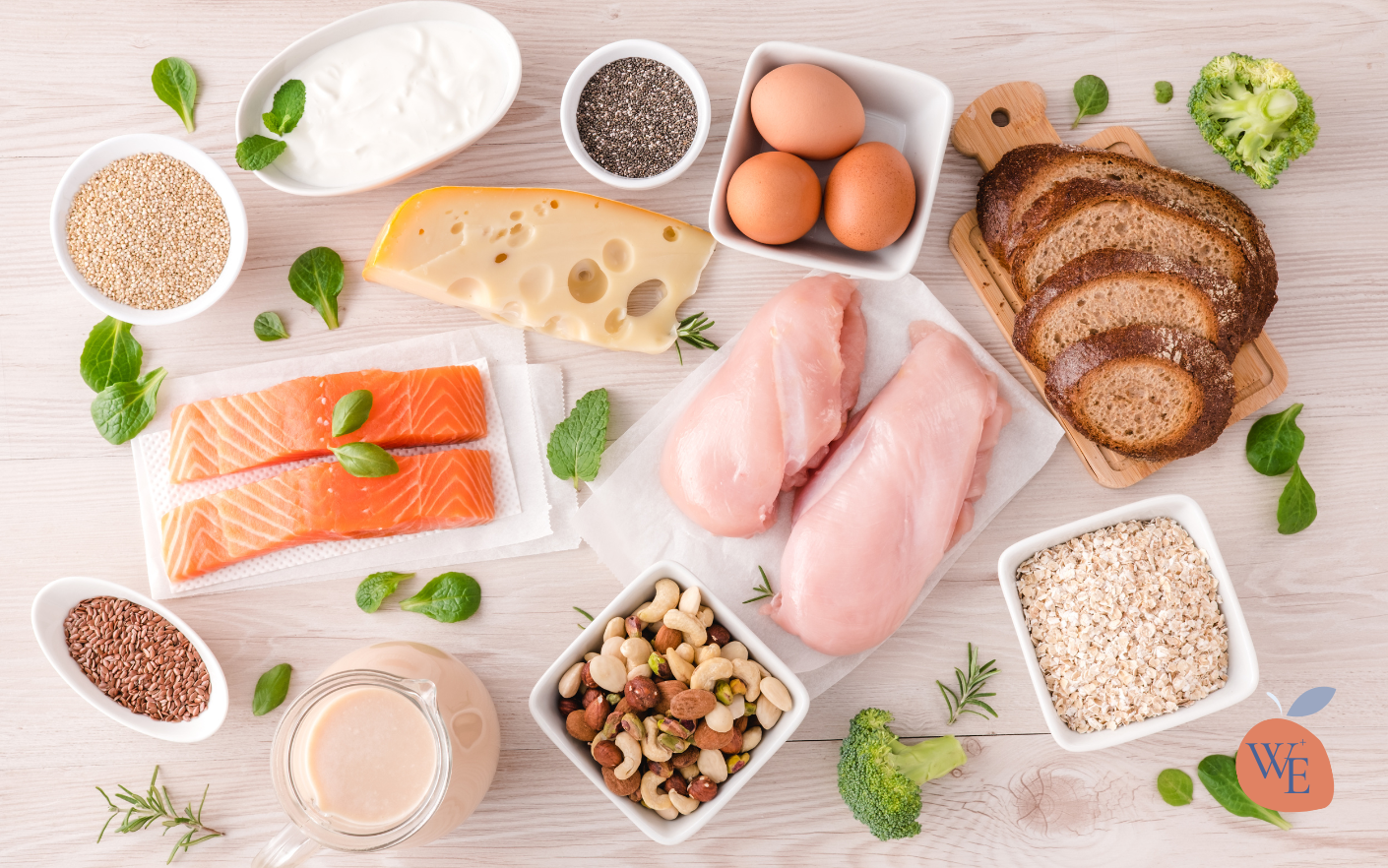Reverse Type 2 Diabetes - how to reverse it naturally

Diabetes affects millions of people worldwide. It’s also one of the leading causes of death in the United States. The good news is that many people can reverse this disease by following a few simple steps.
The causes of type 2 diabetes
There are two main types of diabetes: type 1 and type 2. Type 1 diabetes occurs when the body does not produce insulin. This means that the pancreas stops producing insulin, which leads to high blood sugar levels. In contrast, type 2 diabetes occurs when the body cannot use insulin properly. Insulin resistance is the primary cause of type 2 diabetes.
Treatment options for type 2 diabetes
If you have been diagnosed with type 2 diabetes, then you must take care of yourself by following some lifestyle changes. These changes will help you control your blood glucose level and prevent complications associated with diabetes.
There are many treatment options. The most common treatments include diet, exercise, weight loss, and medications. However, there are other types of treatments that can be used to treat type 2 diabetes. Some of these treatments include insulin injections, oral medication, and surgery.
At Well + Easy we provided nutrition and lifestyle guidance to support with type 2 diabetes reversal. If you need nutrition and diet guidance to go along with what your doctor has recommended, then you're in the right place. As always, please consult with your physician before starting a new diet.
Symptoms and signs of type 2 diabetes
If you are suffering from any of these symptoms, then you should consult with your doctor immediately. The most common symptom of type 2 diabetes is excessive thirst. Other signs include frequent urination, increased hunger, fatigue, blurred vision, and numbness in the feet and hands. These symptoms usually occur gradually, and if left untreated, they could lead to serious health problems such as kidney disease, blindness, and amputations.

Diet for diabetics
A low glycemic diet is an effective treatment for people who suffer from diabetes. This diet helps in controlling blood sugar levels by reducing the absorption of carbohydrates into the bloodstream.
The low glycemic diet is a popular choice among diabetics because it allows them to eat foods that would otherwise cause spikes in blood sugar. Foods high in fiber, such as fruits, vegetables, and legumes, are allowed on the diet. However, some types of bread, pasta, rice, and other grains are restricted and we'll explain in more detail later in this article.
What is a low glycemic diet?
A low glycemic diet is a type of eating plan that restricts foods high in sugar and refined carbs, while increasing consumption of whole grains, vegetables, fruits, legumes, nuts, seeds, and lean meats. These types of diets have been shown to reduce blood glucose levels and improve insulin sensitivity.
Why should I try a low glycemic lifestyle?
The American Diabetes Association recommends people who have diabetes eat a balanced diet that includes plenty of whole grains, vegetables and fruit, along with protein and fat. A low-glycemic diet helps control blood sugar levels and reduces the risk of developing complications associated with diabetes.
How do I start my low glycemic journey?
Start by making small changes to your current diet. Try replacing refined carbs (white bread, white pasta) with whole grain options (brown rice, quinoa). Swap sugary snacks for healthier alternatives (fruit instead of candy, yogurt instead of ice cream). And add some beans and lentils to your meals. You may even want to consider adding some fish to your weekly menu.
Download our free Low GI Starter Kit to get going in the right direction today!
Are there any downsides to a low glycemic approach?
While a low glycemic eating plan can help manage blood sugar levels, it does not eliminate the need for medications. People with diabetes may still require medication to keep their blood sugar under control. Please consult your doctor or physician. However, research shows that following a low glycemic dietary pattern can lower the amount of medication needed to treat diabetes. Check with your doctor.
Is there anything else I should know about a low glycemic way of eating?
Following a low glycemic diet can help prevent weight gain, especially around the waistline. Research suggests that people who follow a low-glycemic pattern tend to consume fewer calories than those who don't. In addition, studies show that people who follow a "good" carbohydrates diet tend to weigh less than those who follow a low carbohydrate diet. In other words, yes, you can still eat carbs!
Recommended reading: The Low Glycemic Eating Diet Plan
In this next section, we'll talk about all the diet and lifestyle changes you can make to improve type 2 diabetes for the long run.

Vitamins
Well + Easy provides a holistic approach to overall health and support of dis-eases in the body. You can heal from the inside out, and instead of focusing on concentrated areas, we focus on whole body nutrition to support everything working together as a single system.
Here is a list of vitamins you want to include in your everyday diet that can come in food form or supplement form. Most of these vitamins can be found in a single supplement/multivitamin, however, you can also get plenty of this nutrition from food.
- Vitamin D
Vitamin D is a fat-soluble vitamin that helps regulate blood sugar levels. It is produced naturally by the body when exposed to sunlight, but many people do not get enough sun exposure. Vitamin D is also found in some foods, including fatty fish (salmon, tuna), eggs, milk, cheese, and fortified cereals.
- Vitamin B12
Vitamin B12 is a water-soluble vitamin that is necessary for red blood cells to function properly. It is also involved in DNA synthesis and nerve transmission. Vitamin B12 is found in meat, dairy products, and eggs.
- Folic Acid
Folic acid is a water-soluable vitamin that is necessary for proper brain and spinal cord development. It is also involved with DNA replication and repair. Folic acid is found in leafy green vegetables, legumes, nuts, whole grains, and enriched breads and cereals.
- Vitamin C
Vitamin C is a water-solvable vitamin that is necessary for collagen formation and wound healing. It is also involved the immune system and aids in iron absorption. Vitamin C is found in citrus fruits, strawberries, broccoli, peppers, tomatoes, potatoes, and spinach.
- Vitamin A
Vitamin A is a fat soluble vitamin that is necessary for vision, bone growth, reproduction, and cellular differentiation. It is also involved as a cofactor in enzymes that help break down fats. Vitamin A is found in liver, sweet potato, carrots, apricots, cantaloupe, mangoes, peaches, and squash.
- Vitamin E
Vitamin E is a fat-soluable vitamin that helps maintain normal skin and hair. It is also involved maintaining healthy eyes and nerves. Vitamin E is found in almonds, avocados, hazelnuts, peanuts, soybeans, wheat germ oil, and corn oil.
- Vitamin K
Vitamin K is a fat-solubile vitamin that is necessary for blood clotting. It is also involved regulating calcium metabolism. Vitamin K is found in dark green vegetables, broccoli, cauliflower, cabbage, Brussels sprouts, kale, collard greens, and mustard greens.
Try this liquid multivitamin that includes them all!

Natural & herbal remedies for type 2 diabetes
There are several natural remedies available for reversing type 2 diabetes. The beauty is that these are likely already staple items in your kitchen or regular foods on your grocery list. If not, be sure to pick up these items on your next visit to the supermarket.
The following natural remedies work well when activated in teas, soups, and other warm dishes:
- Cinnamon – This spice has anti-diabetic properties. It helps lower blood sugar levels and also reduces cholesterol. Make sure to buy Ceylon Cinnamon
- Garlic – Garlic contains anti-inflammatory compounds that help reduce insulin resistance
- Ginger – Ginger is an excellent remedy for diabetes because it lowers blood sugar levels
- Honey – Honey is rich in antioxidants and vitamins that help control blood sugar levels
- Onion – Onions contain quercetin, which is known to improve glucose metabolism
- Turmeric – Turmeric is a powerful herb that controls blood sugar levels. Shop organic turmeric powder here
- Aloe vera – Aloe vera juice is rich in vitamins A, B, C, D, E, K, and folic acid. It is also high in protein and iron

Superfood nutrition for type 2 diabetes
Superfoods are given this catchy name due to the fact that they are some of the most nutrient dense foods in the world. Adding superfoods to your diet is a great way to get more nutrients, reduce inflammation, increase antioxidants, and further balance the alkaline/acidity in the body.
Here's our top 6 superfoods:
Coconut Oil
Coconut oil is high in saturated fats, but they are not harmful to our bodies. In fact, coconut oil helps lower cholesterol levels and reduces inflammation throughout the body. Coconut oil contains lauric acid, capric acid, caprylic acid, myristic acid, palmitic acid, stearic acid, oleic acid, linoleic acid, arachidonic acid, and eicosapentaenoic acid (EPA). These fatty acids help reduce insulin resistance and improve blood sugar levels.
Flax Seeds
Flax seeds are rich in omega-3 fatty acids, fiber, protein, vitamin E, and antioxidants. Omega-3 fatty acids have been shown to decrease triglyceride levels and increase HDL cholesterol. Fiber is great for digestion and flushing toxins out of the system. Protein is necessary for building muscle mass and repairing damaged cells. Vitamin E is good for brain function and protecting the eyes. Antioxidants protect the body from free radicals that cause damage to DNA and other cellular components.
Chia Seeds
Chia seeds are loaded with fiber, protein, vitamins, and minerals. They are also a great source of antioxidants, omega-3 fatty acids (ALA), and phytosterols. Fiber is great for digestive health and chia seeds are known to aid in weight loss. Protein is necessary for maintaining lean muscle mass and helping build strong bones. Vitamins A, B, C, D, and E are all present in chia seeds.
Hemp Seeds
Hemp seeds are packed full of protein, fiber, and omega-3 fatty acids. They are also a good source of iron, zinc, copper, manganese, phosphorous, selenium, and magnesium. Iron is important for red blood cell production and proper oxygen transport throughout the body. Zinc is necessary for the immune system and wound healing. Copper is necessary for bone formation and maintenance. Manganese is necessary for normal thyroid function and proper hormone regulation. Phosphorous is necessary for bone and tooth formation. Selenium is necessary for detoxification and antioxidant activity. And magnesium is necessary for muscle contraction and nerve conduction.
Spirulina
Spirulina is a blue-green algae that is packed full of protein, iron, iodine, zinc, and B12. Iodine is important for thyroid function and B12 is necessary for the nervous system. Iron is necessary for hemoglobin synthesis and oxygen transportation. Zinc is necessary to maintain healthy skin, hair, nails, and mucous membranes. B12 is necessary for proper neurological functioning and nerve transmission.
Aloe Vera Juice
Aloe vera juice is a natural diuretic and laxative. It is also a powerful anti-inflammatory agent. Aloe vera juice is also a potent antioxidant and antimicrobial agent. It is also a great moisturizer and healer for burns, cuts, scrapes, sunburns, and rashes.

Type 2 diabetes basic healthy guidelines
These are the very basic guidelines to follow to get healthy and start on the path to reversing type 2 diabetes. They seem simple because they are! But don't let the simplicity keep you from believing their effectiveness. Write these guidelines down and start creating them in your life as a new healthy habit.
This diet is not as restrictive as once believed. Grab our free Low GI Starter Kit to get a free meal plan, recipes, and kitchen checklist.
- Eat more fruits and vegetables
Fruit and vegetables are rich in fiber and vitamins and help keep blood sugar levels steady. Eating plenty of fruits and veggies helps prevent type 2 diabetes.
- Cut down on sugar
Sugar is a major cause of high blood sugar levels. If you have type 2 diabetes, limit your intake of sugary foods. Instead, eat fruit and vegetables.
- Drink water
Drinking water keeps your body well-hydrated and helps regulate blood sugar levels. Aim to drink at least eight glasses of water each day.
- Get enough exercise
Exercise boosts your metabolism and burns calories. Try walking for 30 minutes three times per week. Keep reading below for more exercise ideas.
- Limit alcohol consumption
Alcohol raises insulin levels, which can lead to higher blood sugar levels. If possible, cut down on alcohol consumption. We have great recommendations for this, be sure to sign up to our newsletter!
- Avoid most processed foods
Processed foods often contain refined grains and added sugars. These foods raise blood sugar levels and increase the risk of developing type 2 diabetes.
- Maintain a healthy weight
Being overweight increases the risk of developing type 1 and type 2 diabetes. Lose weight if you need to. Read more about how much weight loss is necessary to reverse type 2 diabetes in the FAQ section below.
Recommended reading: 10 snacks with low glycemic index

Move your body! Exercises for health & weight management
Cardio exercise
Cardiovascular exercises are those that increase heart rate and blood pressure. These types of exercises include running, biking, swimming, rowing, etc. Cardio exercises help burn calories and improve cardiovascular function.
Strength training
Strength training involves using weight lifting and bodyweight exercises to build muscle mass. Weightlifting exercises include bench press, squat, deadlift, pull-ups, push-ups, chin-ups, dips, overhead presses, curls, rows, lunges, leg lifts, and many others. Bodyweight exercises include planks, push-ups, sit-ups, squats, crunches, and many others.
Flexibility exercises
Flexibility exercises involve stretching muscles and tendons to prevent injuries. Stretching exercises include yoga, pilates, tai chi, and many others. Yoga helps stretch muscles and joints while strengthening them at the same time. Pilates focuses on core stability and flexibility. Tai Chi focuses on balance and coordination.
Balance exercises
Balance exercises focus on maintaining proper posture and preventing falls. Examples of balance exercises include standing on one foot, walking on a balance beam, and many others. Standing on one foot forces the brain to work harder to maintain balance. Walking on a balance beam requires the brain to focus on balancing while moving forward.
Core stability exercises
Core stability exercises focus on building strong abdominal muscles. Abdominal muscles are located in the lower back area and are responsible for supporting the spine. Core stability exercises include planks, bridges, and many others. Planks require the person to lie flat on their stomach and hold themselves up with their hands and toes. Bridges require the person to lay flat on their stomach and lift their hips off the ground.
Endurance exercises
Endurance exercises focus on increasing stamina and endurance. Endurance exercises include long distance runs, sprinting, cycling, and many others. Long distance runs force the body to use oxygen efficiently and increases endurance. Sprinting requires quick bursts of speed and builds stamina. Cycling requires constant movement and builds endurance.
Resistance training
Resistance training focuses on building muscle mass. Muscle mass is what gives us our strength and power. Resistance training includes weight lifting, bodyweight exercises, and many others. Weight lifting exercises include bench press, squats, deadlifts, pull-ups, chin-up, dips, overhead presses and many others. Body weight exercises include planks, pull-ups, dips, push-ups, and many others.
Want to try this diet? Get recipes and a sample meal plan inside our free Low GI Starter Kit!
Commonly asked questions on reversing type 2 diabetes
Can type 2 diabetes be reversed permanently?
Yes, type 2 diabetes can be reversed if you follow a healthy diet and exercise program. It is important to note that there is no cure for type 2 diabetes. However, many people who have had type 2 diabetes for years can reverse it by following a healthy lifestyle.
How much weight do you need to lose to reverse type 2 diabetes?
According to the American Diabetes Association, losing 5% of your body weight may help reverse type 2 diabetes. However, if you're overweight, you'll likely need to lose 10% of your body weight before you see any improvement.
What foods get rid of type 2 diabetes?
There are many different types of food that help reverse type 2 diabetes. Some of these include whole grains, fruits, vegetables, beans, nuts, seeds, fish, poultry, lean meats, low-fat dairy products, olive oil, and herbs such as cinnamon, ginger, turmeric, garlic, and cayenne pepper.
What drink lowers blood sugar?
A study published in Diabetes Care found that people who drank green tea had lower levels of glucose and insulin after eating a meal compared to those who didn't consume any green tea. Green tea contains catechins, which may help reduce blood sugar by increasing the amount of insulin released by the pancreas.
You Might Also Like:



